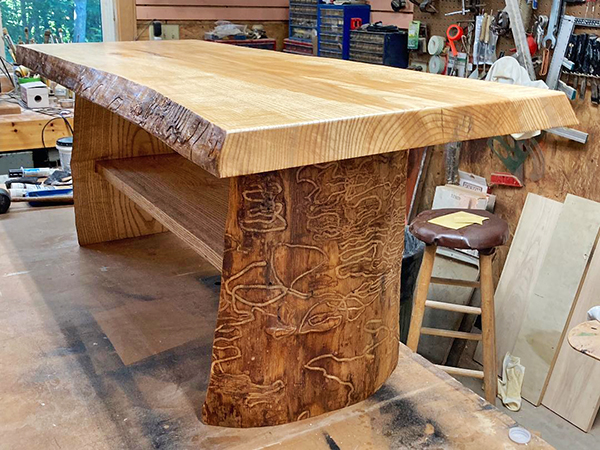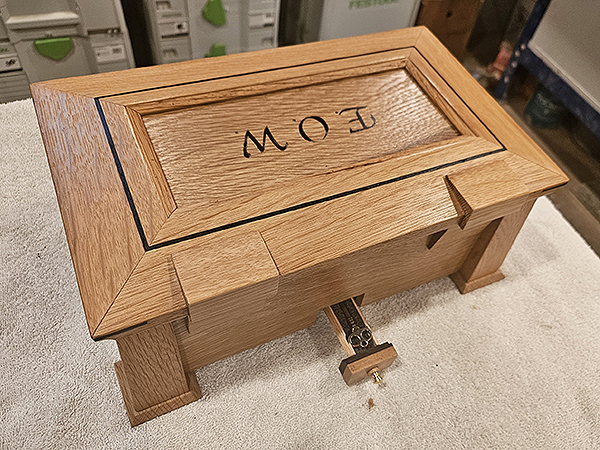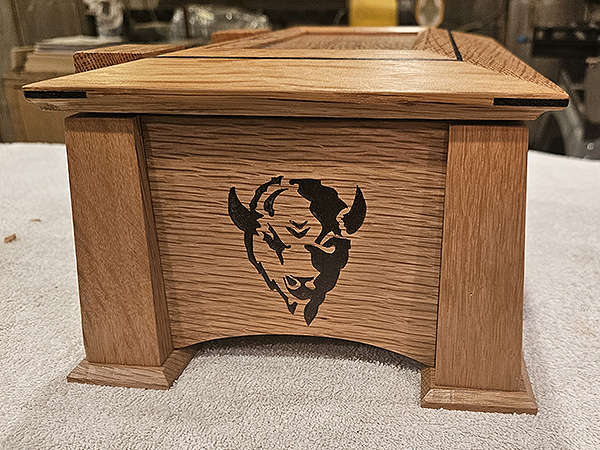
Readers respond to Rob’s query last week about whether or not they use exotic woods. – Editor
“I don’t normally use exotic woods — partially due to cost but also because of concerns about sustainability, given some of the harvesting techniques I have read about. However, I wonder if I am being hypocritical because my grandfather did not have to serve in WWI because he was cutting timber in the swamps of Arkansas and was considered a critical industry. Many people in our country made their living cutting timber. Should we deny people in other countries this same opportunity because we are now enlightened? All that being said, I can make anything I need from oak, walnut, maple, cherry and any of the other sustainably harvested domestic hardwoods.” – Charlie Franz
“If you like wenge but dislike some of its properties, then you should try tropical black walnut. Tropical black walnut doesn’t have the problems you describe. However, it is very dark and carves well.” – Jeffrey Stewart

“I have been milling up a lot of the ash trees that are dying on my property. It’s getting dry enough to use. I just finished a coffee table (above) using a small slab and for the legs, I used pieces from my milling waste pile. It’s not exotic, but it is cheap!” – Rand Hill
“I use purpleheart and jatoba quite often. Used bloodwood once on a project for my daughter who loves red. Will not use it again. Guess I was allergic to the dust. It made me cough, my sinuses ran like Niagara Falls and the skin on my arms became irritated and raw. I enjoy working with exotics because of the colors and grain.” – Ron Grover
“I am working with a few different woods right now that are hard to come by or you need a license to use. But I circumvented that by buying what they call barn wood or recycled from old homes. Here in the Philippines, when they built homes long ago, they cut trees that were close by or trees that were known for hardness to sustain the rigid climate changes we have here. A couple I am working with now are yakul and epeal, not to be confused with epeal epeal which is a different-sized tree that are almost nonexistent today. We even have one tree that will get you jailed close to our property if cut down. We had it checked out before I built my fence. I had to curve around it. Not sure in the spelling of the wood types I am using, but I spelled them like they sounded. Hope this gives you some insight. Yes I’m an ex-pat living here.” – Gay E. Knable III
“I do use some exotics, however very sparingly. When selecting exotic woods, I tend to try and look for recycled or reclaimed wood. My latest finds are coming from Hawaii in the form of koa, mango, monkeypod, ohai, and others. Otherwise, like most U.S.-based woodworkers, I stick with BAMOW (birch, ash, maple, oak and walnut).” – John Burbank
“Wenge is really good wood. I use it mostly for trim because of cost, and it is a pain to work with. Padauk, purpleheart, jatoba, bubinga, bloodwood, sapele, ipê and various mahogany types (and several other exotics) have all found their way to my shop for various projects from cutting boards to cabinets. In the past, I used a lot of lyptus because of sustainability, but it seems to be hard to find now, at least at my local supplier. It is almost as annoying as wenge to work with, though. I always have a bit of chechen round for tool handles. Maybe it is not a true rosewood, but it looks very good as a tote or knob. I love exotics and I do look at sustainability, but when you go to Brazil and see jatoba being used for fence posts (it makes good ones I was told), somehow sustainability is somewhat a secondary concern.” – Ted Eggleston


“In regards to your inquiry about the use of exotic woods, I will occasionally purchase a small amount of various woods for my smaller projects. I like to match them with native woods to get a certain contrasting look. Most recently, I built a keepsake box for my four-year-old grandson. I used white oak with panga panga (cousin to wenge). The two contrasting woods made for a beautiful project. I would like to be more educated about exotic woods regarding the harvesting or sustainability of the trees. I would hope that the exotic woods that are sold in the U.S. are supplied legally.” – gweb1958
“I love olivewood but it’s sometimes hard to get.” – Jeff Hansen
“The only exotic wood I’ve used has been khaya or African mahogany. It works and finishes very nicely. It’s now hard to import, though.” – James P. Cottingham






